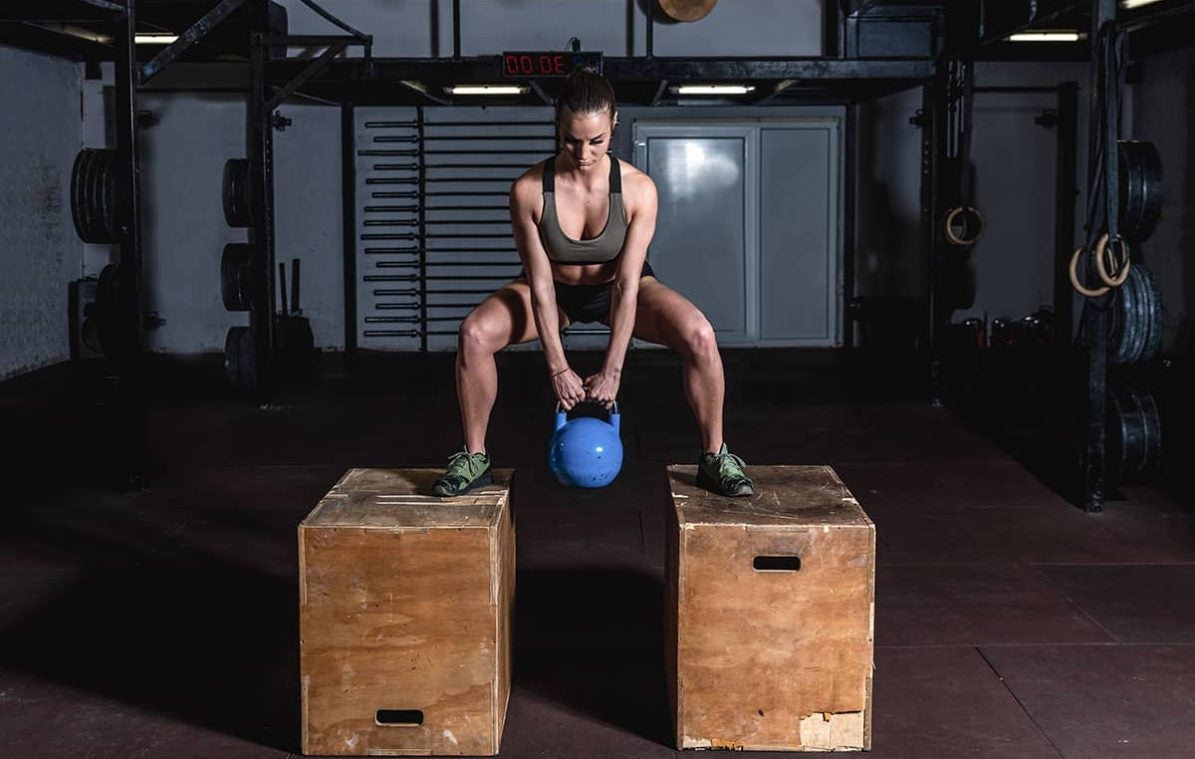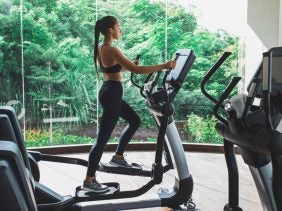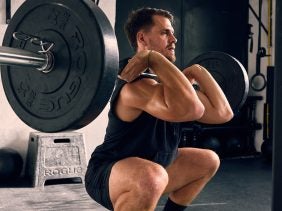Want to Build Muscle Faster with Increased Range of Motion?
 © foodspring
© foodspring
You’re constantly looking for ways to intensify your strength training and keep your muscle growth from plateauing. More weight, more repetitions, right? But the easiest way to train efficiently is often underestimated, forgotten or simply ignored. Training using a full range of motion (ROM) may not initially feel as satisfying as adding another weight plate, but it can significantly improve your workout.
Related: How Does Muscle Building Actually Work? Read All About Hypertrophy.
Range of motion (ROM) is the level of movement that occurs in a particular joint while performing an exercise.
There is a distinction between active and passive ROM. In passive ROM, part of your body is moved by an external influence such as your physiotherapist, whereas in active ROM, you move it yourself using your muscles. Training with full ROM in strength training therefore means that your muscle is loaded throughout the entire range of motion, from stretching to contracting, while utilizing all your active joint mobility.
A systematic review, published in the Journal SAGE Ppen Medicine, examined the effect of ROM on muscle hypertrophy during strength training. Six studies with a total of 135 participants were compared, of which only 8 were women. Of these studies, four dealt with the effects on lower extremities, and two with the upper extremities. The researchers concluded in their evaluation that training with full ROM, in comparison with training with partial ROM, can have a positive effect on lower body muscle hypertrophy. No definite conclusion can be made for the upper body and trunk muscles though, as studies remain limited and contradictory.
Another systematic review, published in the Scandinavian Journal of Medicine & Science in Sports, arrived at a similar conclusion when evaluating 16 different studies. An increase in muscle strength and hypertrophy of the lower body muscles during training with full ROM was also observed when compared to partial ROM. Functional muscle performance also seemed to improve.
There are many potential causes if your ROM is limited in some movements. Often however, it is merely that we’re stiff from excessive sitting. As the saying goes, use it or lose it. ROM can be improved through regular mobility training, specifically before a workout as part of your warm up. If squats are on your training schedule, you should mobilize your ankles and hips before the workout. Tick off both of these with a deep squat rotation, for example. You can find a guide and other exercises in our Mobility Warm Up for Leg Training. Make sure you stabilize your knees; some lunge variations without weights are ideal.
As always, listen to your body and don’t ignore pain. If you’re sitting all day and do your mobility exercises in the evening, it probably won’t feel that comfortable. This is completely normal. If you feel pain, however, it’s best to find out the cause.
Your ego has to take a back seat when training with full ROM, however the potential results you can see, especially on an intense leg day, will soon make up for this.
Learn more about this topic at foodspring:
- Creatine Before or After Working Out. Does It Really Matter When We Take It?
- How a Strong Core Will Improve Your Athletic Performance
- Boost Your Booty With Our Workout
Sources for this article
We at foodspring use only high-quality sources, including peer-reviewed studies, to support the facts within our articles. Read our editorial policy to learn more about how we fact-check and keep our content accurate, reliable, and trustworthy.

































